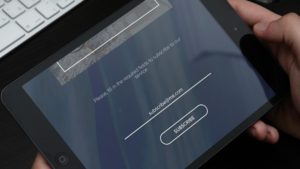by Daniela Barletta, Strategist at Initials
Today, the average consumer spends more than 40% of their waking life online. It’s now
abundantly clear that the social dynamics brought about by the pandemic have served as a
catalyst for even greater digital adoption.
As the world grows accustomed to the benefits of digital life – namely convenience, experience
and speed – we might expect that consumers want even more digital in their lives. After all, this
is what agencies, social media companies and tech platforms are telling us.
And yet, while more digital seems like the logical solution, our research shows this is simply not
true. What consumers really want are more engaging experiences, where physical and digital
are used to complement each other and offer more interactive moments.
As brands seek to design and implement compelling strategies, this nuance must be accounted
for to avoid digital overload and a growing sense of “sameness” in the digital space.
In this article, we’ll explore how brands can facilitate a more hybrid experience that caters to
consumers’ expectations – and reveal the surprising truth about what people are really after.
What do consumers really want from brands?
The days of the linear customer journey are gone.
Today there are an endless number of devices, platforms and channels on which brands and
consumers can interact. And though the benefits (targeted advertising, enhanced browsing,
faster checkout, quicker delivery, etc.) are palpable, the sheer size and scope of these digital
interactions can be draining.
At least that’s what consumers seem to be suggesting. In the wake of the UK government’s
announcement that all Covid-19 restrictions will end, we polled a nationally representative
audience of consumers to uncover how satisfied people are with the digital experiences they
receive from brands in the ‘health and beauty’ and ‘alcohol’ sectors.
Interestingly, the results point to widespread digital fatigue.
Health & Beauty findings
When asked about attitudes towards brand experiences, nearly 1 in 3 consumers (32%)
said they would “prefer less digital experiences” while 36% would “prefer more physical
experiences”.
Alcohol findings
A similar trend emerged in the alcohol sector, as 31% of consumers indicated a desire
for “less digital experiences”, whereas 37% would “prefer more physical experiences”.
These results jar with what mainstream opinion tells us – that digital experiences in isolation are
what consumers want to experience more of. While there’s no doubt that digital is here to stay,
these findings suggest that brands should at least be asking, “How much digital is too much?”
To remain relevant and cater to the consumer’s ever-evolving needs, a hybrid approach will be
essential. Brands need to understand, facilitate and even predict what consumers will want at
certain parts of their journey.
For example, when people are shopping in-store, experiential theatre and digital is an aspect
that would cater to the need for exploration and sampling, while post-purchase rewards and
loyalty schemes are better suited to the digital realm via email, app or push notifications.
Our evidence supports this, as well over a third of respondents say they want “more physical
experiences” from brands in the future. To put this into context, less than a quarter of
consumers indicated an appetite for “more digital experiences”, which suggests that digital
ennui has indeed set in. This opens the door for brands to deliver total customer experiences
that meet new expectations.
Delivering the total customer experience to meet expectation
In an age where headlines are dominated by tech giants, ecommerce brands and a not-so-
distant metaverse, it’s important to remember that audiences exist in a hybrid world beyond the
purely digital space.
As our research suggests, consumers realise that digital doesn’t solve all their problems and
doesn’t hold all the answers. After all, when the whole world is lived through a screen, some
brand experiences online can start to look and feel the same.
However, the real magic happens when the physical and digital worlds collide to create true
blended experiences. This opportunity to exist in more than one dimension enables brands to
be present for their audiences in ways that reinforce overall brand messaging, values and
relevance.
Given the consumer expectation of more physical experiences, it’s never been more crucial for
brands to prioritise customer-centricity when integrating online and offline strategies. This is how
brands can deliver a total customer experience – one that explicitly delivers on new
expectations.
With the resurgence of the experience economy, for example, brands can bring thought-out tech
advancements into the physical space. It’s by facilitating a total customer experience that brands can create a real point of difference and better resonate with a culture that is longing for more real-world moments.
Clearly, there’s no going back from digital, but this should serve as part of a 3-dimensional
brand world. As our research shows, the brands that can combine physical and digital
experiences will deliver on the sum of what audiences really want: seamless, enriching and
inspiring moments that weave across the total customer experience.








